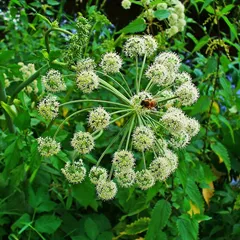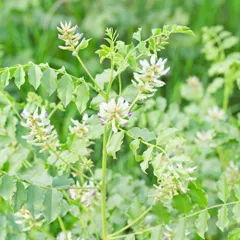Tiao Gan Tang
Chinese: 调肝汤
Pinyin: Tiào Gān Tāng
Other names: Regulating the Liver Decoction




Tiao Gan Tang
Chinese: 调肝汤
Pinyin: Tiào Gān Tāng
Other names: Regulating the Liver Decoction
Ingredients: 7 herbs
Category: Formulas that nourish Yin and tonify
Main actions: Nourishes Kidney and Liver Yin
Source: Fu Qing Zhu's Gynecology (1827 AD )
The information provided here is not a replacement for a doctor. You shouldn't use it for the purpose of self-diagnosing or self-medicating but rather so you can have a more informed discussion with a professional TCM practitioner.
Tiao Gan Tang is a 7-ingredient Chinese Medicine formula with Dong Quai (Dang Gui) as a principal ingredient.
Invented in 1827 AD, it belongs to the category of formulas that nourish Yin and tonify. Its main action is that it nourishes Kidney and Liver Yin.
In Chinese Medicine health conditions are thought to arise due to "disharmonies" in the body as a system. These disharmonies are called "patterns" and the very purpose of herbal formulas is to fight them in order to restore the body's harmony.
In this case Tiao Gan Tang is used by TCM practitioners to fight patterns like Kidney and Liver Yin Deficiency or Liver Blood and Kidney Yin Deficiency. From a Western Medicine standpoint, such patterns can give rise to a range of conditions such as absence of menstruation or menstrual cramps for instance.
On this page, after a detailed description of each of the seven ingredients in Tiao Gan Tang, we review the patterns and conditions that Tiao Gan Tang helps treat.
The seven ingredients in Tiao Gan Tang

Dang Gui is a king ingredient in Tiao Gan Tang. Like the name indicates, it means it has more power than other ingredients in the formula.
1. Dong Quai (Dang Gui)
Part used: Dried root
Nature: Warm
Meridian affinity: HeartLiverSpleen
Category: Tonic herbs for Blood Deficiency
In general Dang Gui's main actions are as follows: "Tonifies the Blood. Lubricates the Intestines. Relieve constipation. Promotes circulation and dispels Bi Pain. Reduce Dysmenorrhea and help with irregular menstruation."
In the context of Tiao Gan Tang, it is used because it nourishes and invigorates Blood.

2. White Peony Roots (Bai Shao)
Part used: Dried root
Nature: Neutral
Meridian affinity: LiverSpleen
Category: Tonic herbs for Blood Deficiency
In general Bai Shao's main actions are as follows: "Tonifies the Blood and preserves the Yin. Nourishes the Liver and assists in the smooth flow of Qi. Regulates the meridians and eases the pain."
In the context of Tiao Gan Tang, it is used because it nourishes and moves Blood.

3. Yam (Shan Yao)
Part used: Dried rhizome
Nature: Neutral
Taste(s): Sweet
Meridian affinity: KidneyLungSpleen
Category: Tonic herbs for Qi Deficiency
In general Shan Yao's main actions are as follows: "Tonifies the Spleen and Stomach. Tonifies the Lung Qi and nourishes the Lung Yin. Nourishes the Kidneys and consolidates Jing."
In the context of Tiao Gan Tang, it is used because it tonifies Stomach and Kidneys.

4. Donkey-Hide Gelatin (E Jiao)
Part used: Solid glue prepared from the dried or fresh skin of donkeys
Nature: Neutral
Taste(s): Sweet
Meridian affinity: KidneyLiverLung
Category: Herbs that invigorate the Blood
In general E Jiao's main actions are as follows: "Tonifies and nourishes Blood. Stops bleeding. Moistens and lubricates Yin."
In the context of Tiao Gan Tang, it is used because it nourishes Blood.

5. Cornelian Cherries (Shan Zhu Yu)
Part used: Dried ripe sarcocarp
Nature: Warm
Taste(s): Sour
Meridian affinity: KidneyLiver
Category: Herbs that stabilize and bind
In general Shan Zhu Yu's main actions are as follows: "Preserves and tonifies the Kidney, Liver and Essence. Stops sweating and benefits the Yang and Qi. Assists menstruation and stops bleeding."
In the context of Tiao Gan Tang, it is used because it nourishes Liver-Yin.

6. Morinda Roots (Ba Ji Tian)
Part used: Dried root
Nature: Warm
Meridian affinity: KidneyLiver
Category: Tonic herbs for Yang Deficiency
In general Ba Ji Tian's main actions are as follows: "Tonifies the Kidney Yang. Expels Wind-Damp-Cold painful obstruction (Bi Pain)."
In the context of Tiao Gan Tang, it is used because it tonifies Kidney Yang and Kidney Essence.

7. Liquorice (Gan Cao)
Part used: Dried root and rhizome
Nature: Neutral
Taste(s): Sweet
Meridian affinity: HeartLungSpleenStomach
Category: Tonic herbs for Qi Deficiency
In general Gan Cao's main actions are as follows: "Tonifies the Basal Qi and nourishes the Spleen Qi. Clears Heat and dispels toxicity. Moistens the Lungsexpel phlegm and stop coughing. Relieves spasms and alleviates pain. Harmonizes and moderates the effects of other herbs."
In the context of Tiao Gan Tang, it is used because it harmonizes all ingredients.
Conditions and patterns for which Tiao Gan Tang may be prescribed
It's important to remember that herbal formulas are meant to treat patterns, not "diseases" as understood in Western Medicine. According to Chinese Medicine patterns, which are disruptions to the body as a system, are the underlying root cause for diseases and conditions.
As such Tiao Gan Tang is used by TCM practitioners to treat two different patterns which we describe below.
But before we delve into these patterns here is an overview of the Western conditions they're commonly associated with:
Absence of menstruation Menstrual cramps
Again it wouldn't be correct to say "Tiao Gan Tang treats absence of menstruation" for instance. Rather, Tiao Gan Tang is used to treat patterns that are sometimes the root cause behind absence of menstruation.
Now let's look at the two patterns commonly treated with Tiao Gan Tang.

The Liver is a so-called "Zang" Organ. Learn more about the Liver in Chinese Medicine
Kidney and Liver Yin Deficiency
Pulse type(s): Empty (Xu), Floating (Fu)
Tongue coating: Partial absence of coating
Tongue color: Red
Symptoms: Tics Melasma Vertigo Fatigue Tinnitus Insomnia Dry eyes Dry hair Dry skin Dizziness Dry mouth Sore back Headaches Dry throat Dry vagina Dry stools Amenorrhea Joint pain Infertility Hot flushes Night sweats Blurred vision Scanty periods Delayed period Excessive tear Lower back pain Lightheadedness Afraid of light Tingling of limbs Diminished hearing Vertical headaches Occipital headaches Nocturnal emissions Chronic sore throat Hot palms and soles Numbness in the limbs Withered and brittle nails Heat in vaginal and vulvar Feeling of heat in the afternoon Spontaneous and nocturnal emissions Soreness and weakness in the lower back
Tiao Gan Tang is sometimes prescribed by TCM practitioners to treat Kidney and Liver Yin Deficiency. This pattern leads to symptoms such as dizziness, tinnitus, diminished hearing and lower back pain. Patients with Kidney and Liver Yin Deficiency typically exhibit empty (Xu) or floating (Fu) pulses as well as Normal-coloured without coating or with rootless coating.
The Liver stores Blood while the Kidneys store Essence.
Liver Blood depends on Essence for nourishment, while Essence depends on Blood for replenishment. Both have a common source: Grain Qi derived from the Spleen. In terms of Five Elements, the Kidneys nourish the Liver.
A long term Liver Blood... read more about Kidney and Liver Yin Deficiency

The Liver is a so-called "Zang" Organ. Learn more about the Liver in Chinese Medicine
Liver Blood and Kidney Yin Deficiency
Pulse type(s): Empty (Xu), Floating (Fu)
Tongue coating: Complete absence of coating
Tongue color: Red
Symptoms: Fatigue Tinnitus Sore back Dizziness Scanty periods Blurred vision Delayed period Dull menstrual cramps Pain relieved with massage
Tiao Gan Tang is sometimes prescribed by TCM practitioners to treat Liver Blood and Kidney Yin Deficiency. This pattern leads to symptoms such as sore back, scanty periods, dizziness and pain relieved with massage. Patients with Liver Blood and Kidney Yin Deficiency typically exhibit empty (Xu) or floating (Fu) pulses as well as a red tongue with complete absence of coating.
Formulas similar to Tiao Gan Tang
Dang Gui Di Huang Yin is 57% similar to Tiao Gan Tang
Gui Shao Di Huang Tang is 50% similar to Tiao Gan Tang
Da Bu Yuan Jian is 50% similar to Tiao Gan Tang
Xiao Yao San is 43% similar to Tiao Gan Tang
Ren Shen Zi Xie Tang is 43% similar to Tiao Gan Tang
Zuo Gui Yin is 43% similar to Tiao Gan Tang









